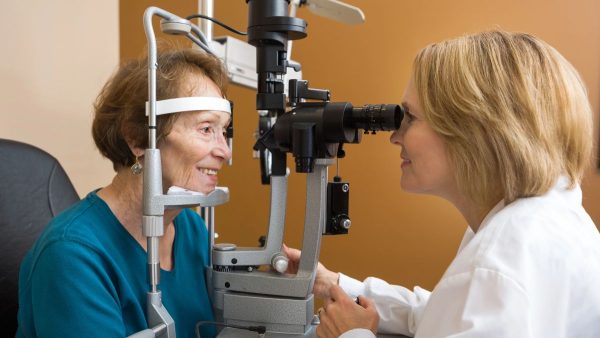Is diabetes affecting your eyes?

Diabetes doesn’t just affect your blood sugar—it can also impact your vision in significant, often silent, ways. Diabetic eye disease, a term that covers conditions such as diabetic retinopathy and diabetic macular edema (DME), is one of the leading causes of vision loss among working-age adults. Nearly one-third of people with Type 2 diabetes have some form of eye damage related to the disease. The following will help you recognize the signs, understand the risks, and take action before permanent damage occurs.
Understanding the risks of diabetic eye disease
People with Type 2 diabetes are especially vulnerable to developing diabetic eye disease. Left untreated, these conditions can lead to permanent vision loss or even blindness. Diabetic retinopathy is the most common, affecting the blood vessels in the retina. In contrast, diabetic macular edema (DME) involves a buildup of fluid in the macula, the part of the eye responsible for sharp and color vision.
The tricky part? Many patients don’t realize they have diabetic eye disease until significant damage has occurred. Roughly 40% to 45% of people with diabetes experience symptoms of diabetic retinopathy, but many fail to notice these changes early on.
That makes early detection crucial—not just for those with a diabetes diagnosis but also for anyone experiencing vision issues.
Recognizing the symptoms
Even if you haven’t been diagnosed with diabetes, specific symptoms can be warning signs that something is wrong. Below are key indicators of diabetic eye disease:
- Diabetic retinopathy symptoms
- Blurry vision
- Floaters (white or translucent spots that move in your vision)
- Colors appearing faded or washed out
- Blank or dark areas in your field of vision
- Diabetic macular edema symptoms
- Blurry or wavy vision in the center of your vision
- Floaters
- Dull or faded colors
If you experience any of these symptoms, especially if you already have diabetes, getting an eye exam as soon as possible is critical.
Getting a diagnosis: why timing matters
Both diabetic retinopathy and DME are treatable—but their prognosis improves dramatically when caught early. A multidisciplinary approach ensures that ophthalmologists, endocrinologists, and primary care providers work together to catch and manage diabetes-related eye issues.
Suppose signs of eye disease are found, and you’re already diagnosed with diabetes. In that case, your eye doctor may recommend a follow-up with your primary care physician or endocrinologist. If eye disease is discovered before a diabetes diagnosis, it could be the first sign that prompts further evaluation by a diabetes specialist.
Exploring treatment options
Managing diabetic eye disease involves controlling diabetes and treating the eye condition directly. Here’s how:
- Diabetes management
- Healthy lifestyle choices
- Monitor blood sugar
- Medication compliance
- Eye medications
In some extreme cases, eye surgery such as Laser Therapy and Vitrectomy might become necessary.
Taking control before it’s too late
The most important step you can take is not to wait for symptoms to worsen. Vision changes may be your first clue that something more serious is happening in your body. Diabetic eye disease is manageable—and even preventable—if you stay proactive with regular eye exams and diabetes management.
Even if you haven’t been diagnosed with diabetes, don’t ignore vision problems. They could be the first sign that you need medical attention.
